The document discusses JavaScript inheritance using prototypes. It explains that JavaScript uses prototypal inheritance instead of classical inheritance. It provides an example of setting up a prototype chain where Animal is the base "class" and Chordate and Mammal inherit from it by setting their prototypes to instances of the superclass. This establishes a hierarchy where methods and properties are inherited through the prototype chain.
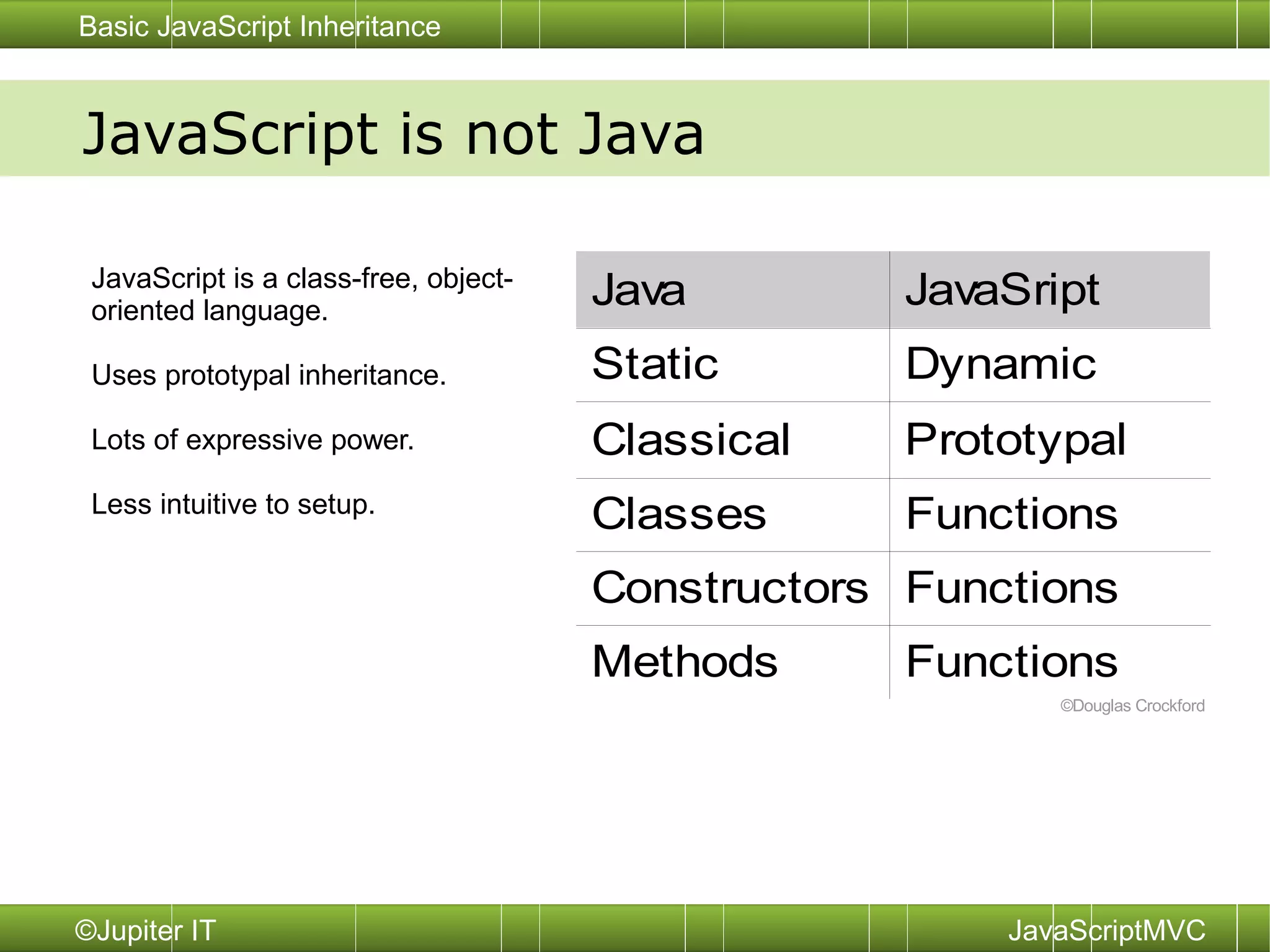
!['Everything' is an Object Anything created with the new keyword is an object. new String(“hi”) new Function(“x”,”return x*x”) function(x){ return x*x} new Object(); {} new Array() [] Person = function(name){this.name = name) me = new Person(“Justin”) Exceptions: String(“hi”) “ hi” 4 true](https://image.slidesharecdn.com/inheritance2-1230870200383391-1/75/Basic-inheritance-in-JavaScript-2-2048.jpg)
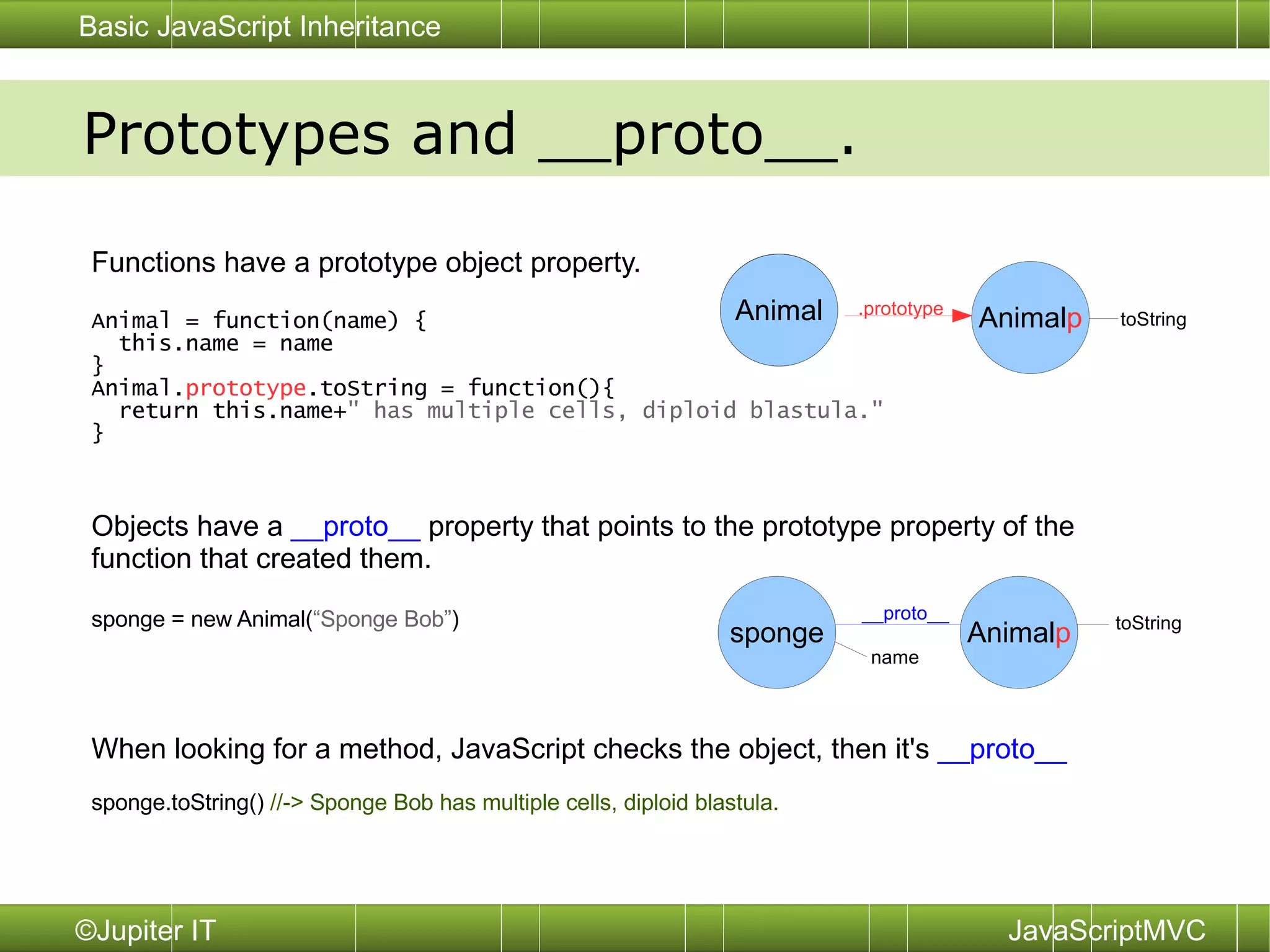
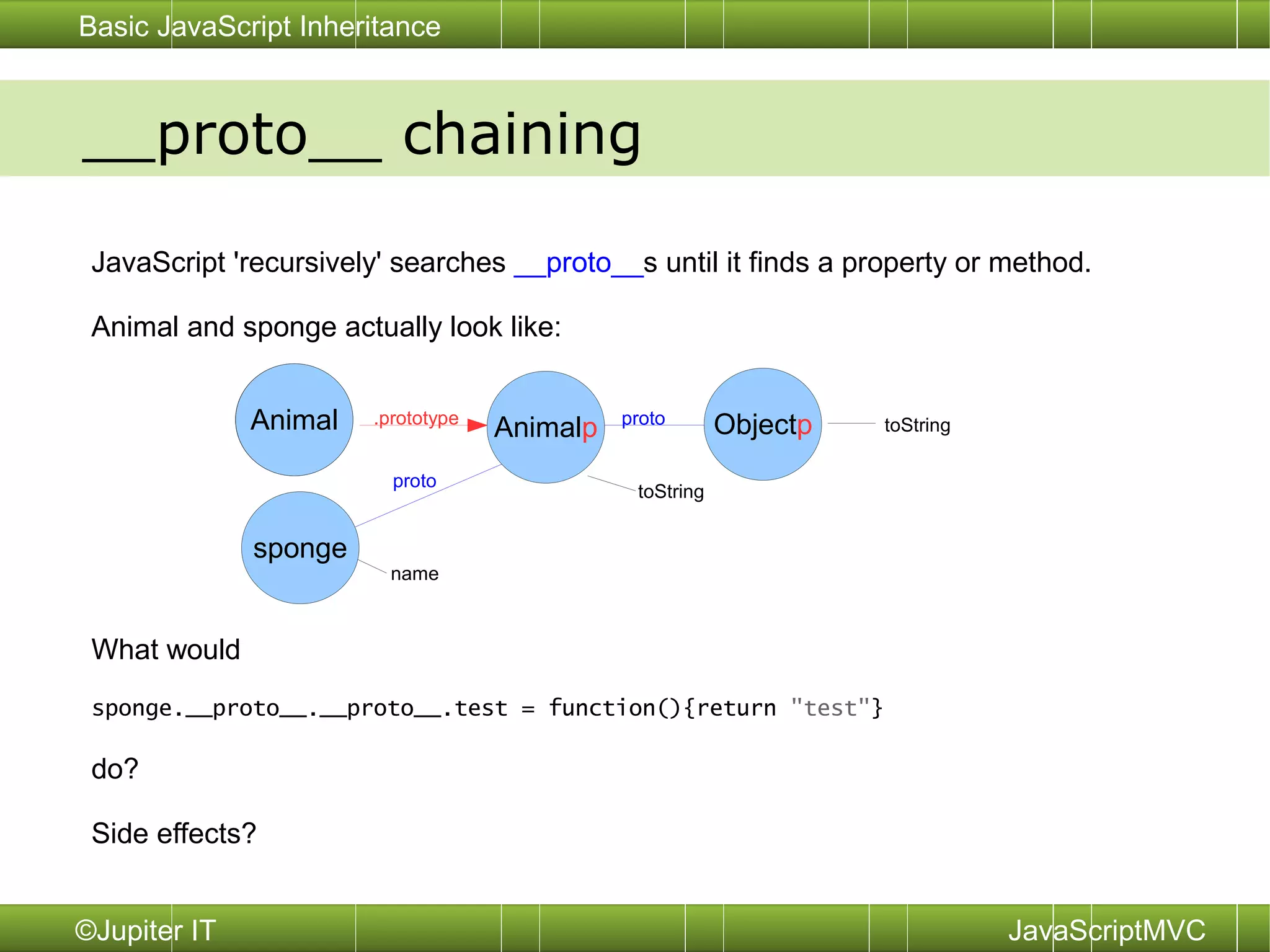
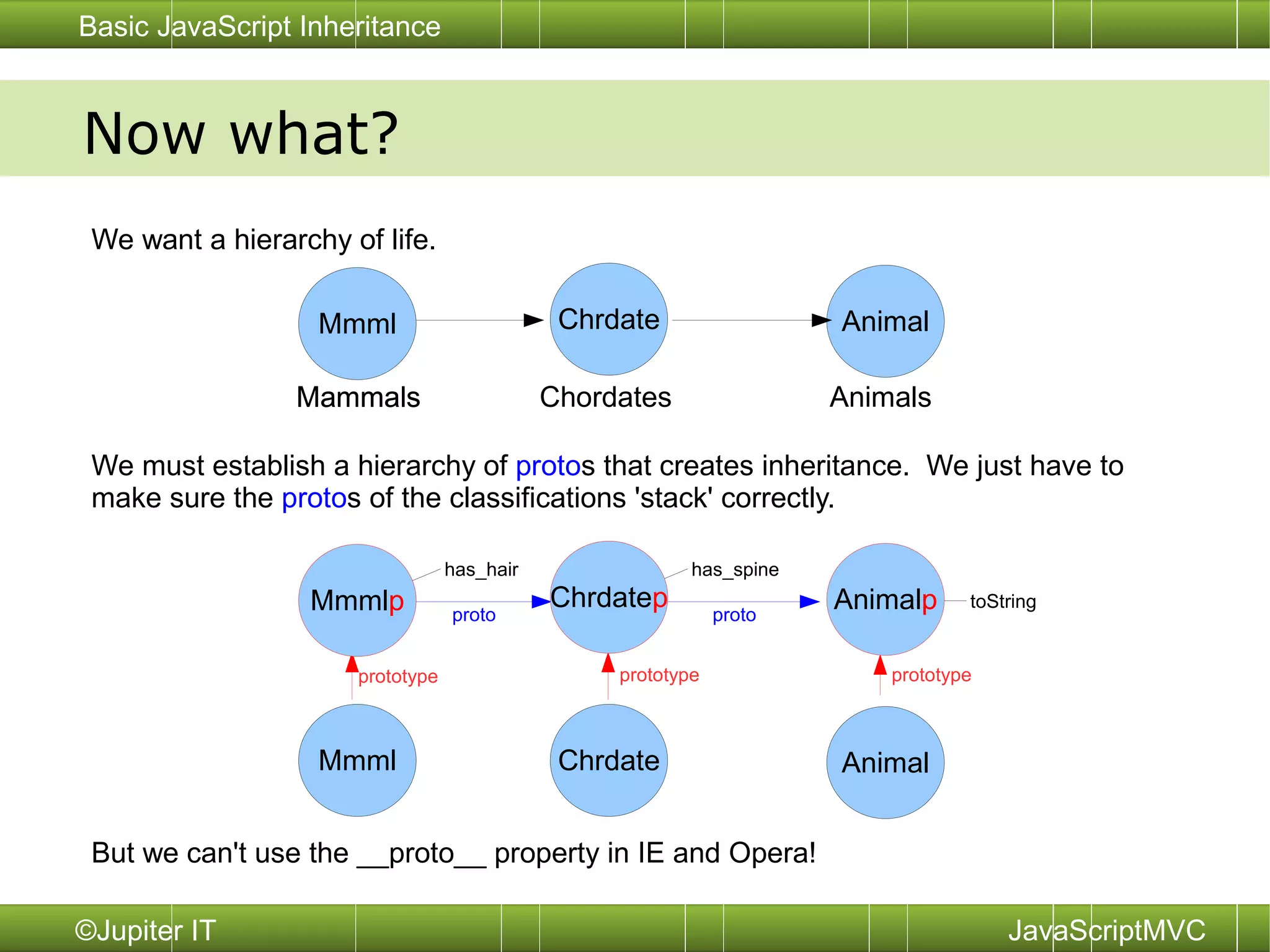
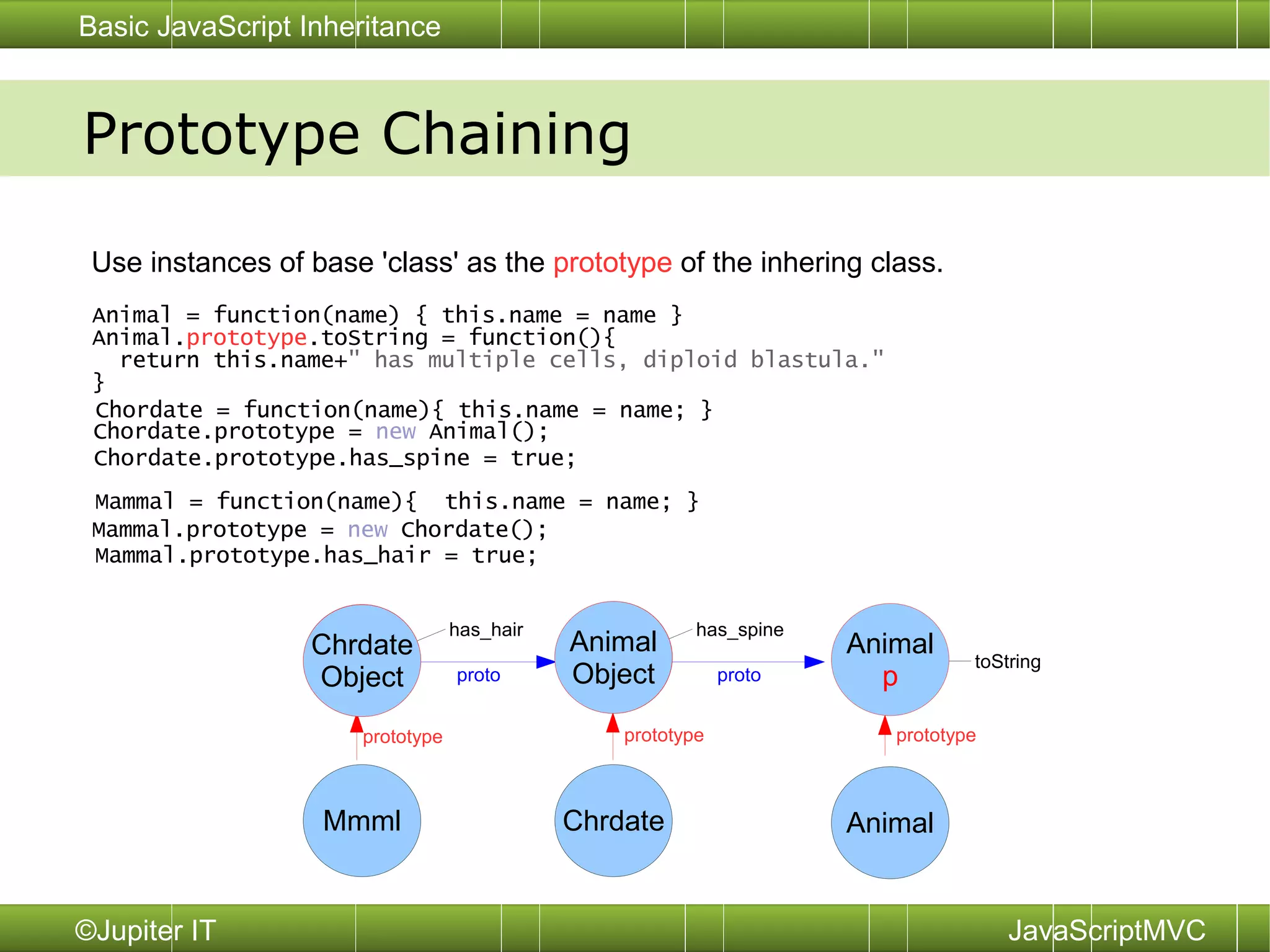
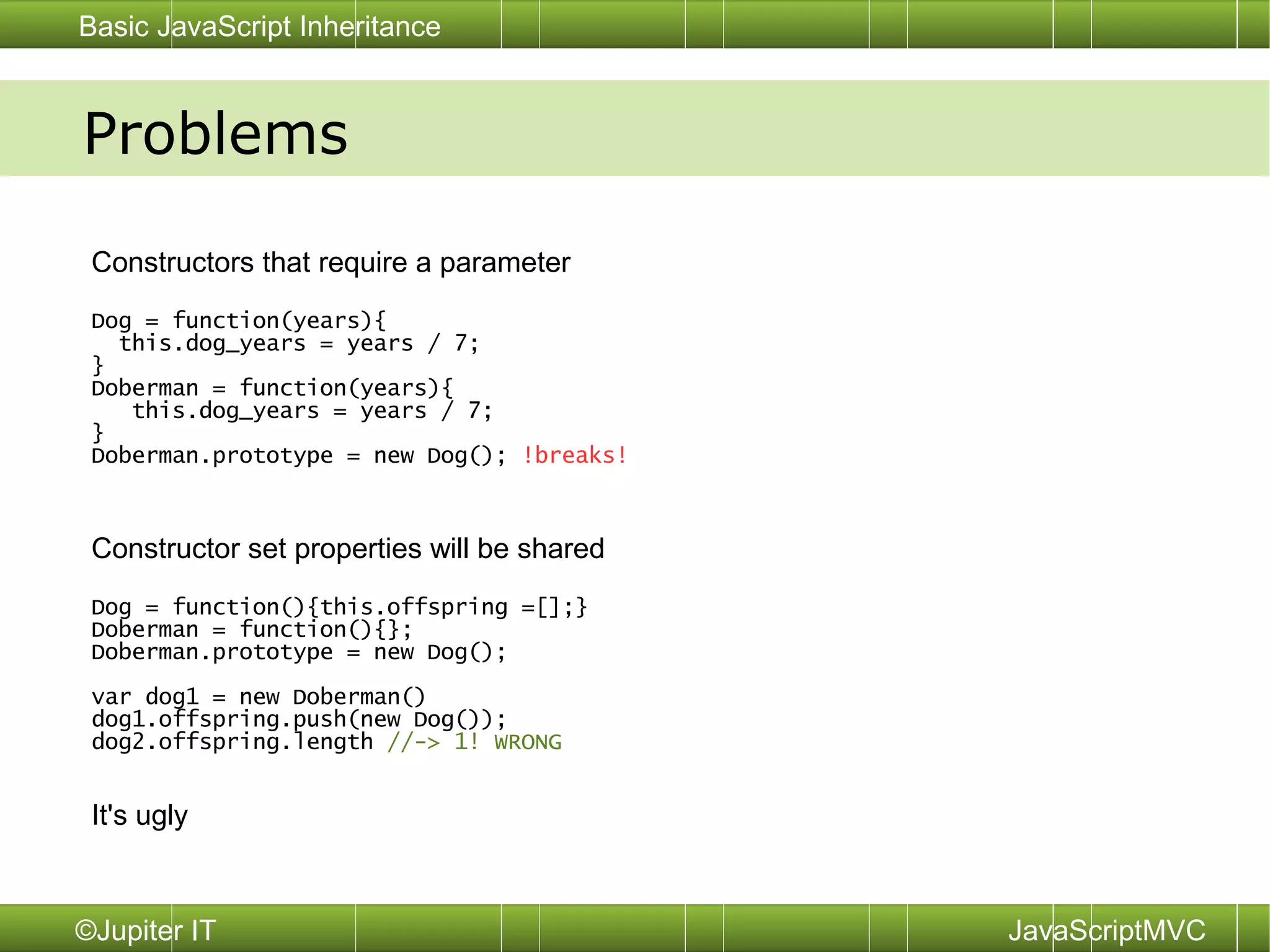










![Problems Constructors that require a parameter Dog = function(years){ this.dog_years = years / 7; } Doberman = function(years){ this.dog_years = years / 7; } Doberman.prototype = new Dog(); !breaks! Constructor set properties will be shared Dog = function(){this.offspring =[];} Doberman = function(){}; Doberman.prototype = new Dog(); var dog1 = new Doberman() dog1.offspring.push(new Dog()); dog2.offspring.length //-> 1! WRONG It's ugly](https://image.slidesharecdn.com/inheritance2-1230870200383391-1/75/Basic-inheritance-in-JavaScript-18-2048.jpg)